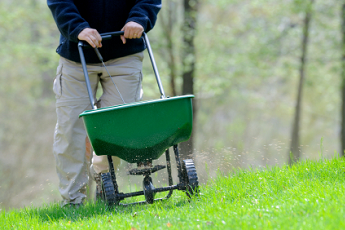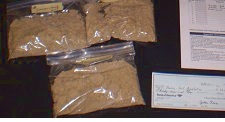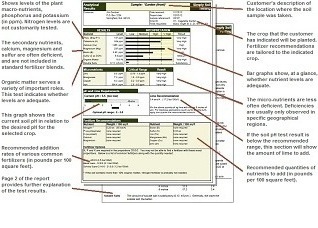 |
"Simply Soil Testing" provides soil testing |
|

How to Test Your Soil 1. Print out the Soil Submission Form 2. Collect soil samples from the areas to be tested. Follow the simple recommendations in our Sampling Guide to obtain soil samples that are truly representative of your soil. 3. Choose a soil test option (see table below). 4. Fill out the submission form and send it together with your soil samples and a check to the address listed on the form. Soil Tests and Prices
Area Farm & Garden Events |
||||||||
| Why Test Your Soil? |
|
Data in the Soil Report | |||||||||
 |
 |
||||||||||
Nutrient Deficiencies are CommonConventional N-P-K fertilizers only supply the three major nutrients. They don't correct problems with other nutrients or with the soil pH. Healthier Plants Produce Better ResultsPlants growing in fertile soil tend to be healthier and more resistant to disease, and they tend to be more productive. Get to the Root of a ProblemDifferent nutrient deficiency symptoms in plants can appear similar. Soil testing eliminates the guesswork. Fertilize EconomicallyApply only the fertilizer you need, and don't spend money on fertilizer you don't need. 
|
Soil Levels of Ten NutrientsIf any of the primary, secondary or micro-nutrients are deficient, the report will include fertilizer recommendations. Soil pH and Lime RecommendationsIf your soil is too acidic for your garden or lawn, the report will recommend how much lime to add to your soil. Organic Matter ContentIf you have been adding organic matter to your soil or are considering doing so, you may want to check on the current status. Recommendations Tailored to Your PlantsThe report shows the lime & fertilizer recommendations for your selected plants, along with bar graphs showing actual versus desired nutrient levels. Click to view a sample test report >> 
|